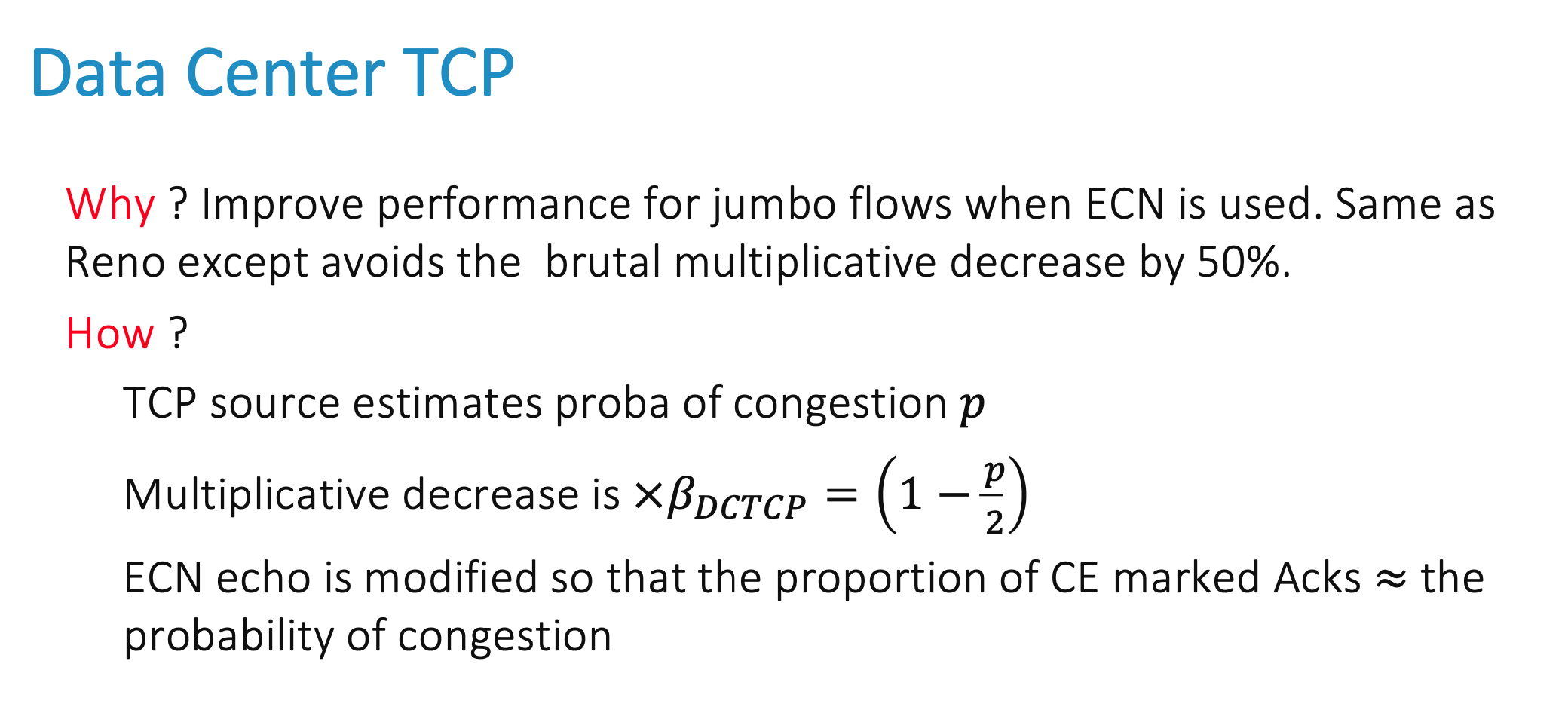I don't quite get why we set the multiplicative decrease to (1 - p/2) when the estimated congestion rate is p. Say if p = 10%, it means 10% of my packets are considered lost. This implies I should send only 90% of my packets (which should be 1-p), right? But by the formula, I will be still sending 95% of the packets. Did I misunderstand what p means here?
